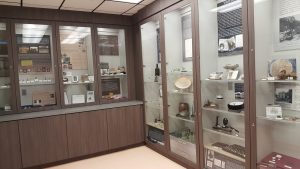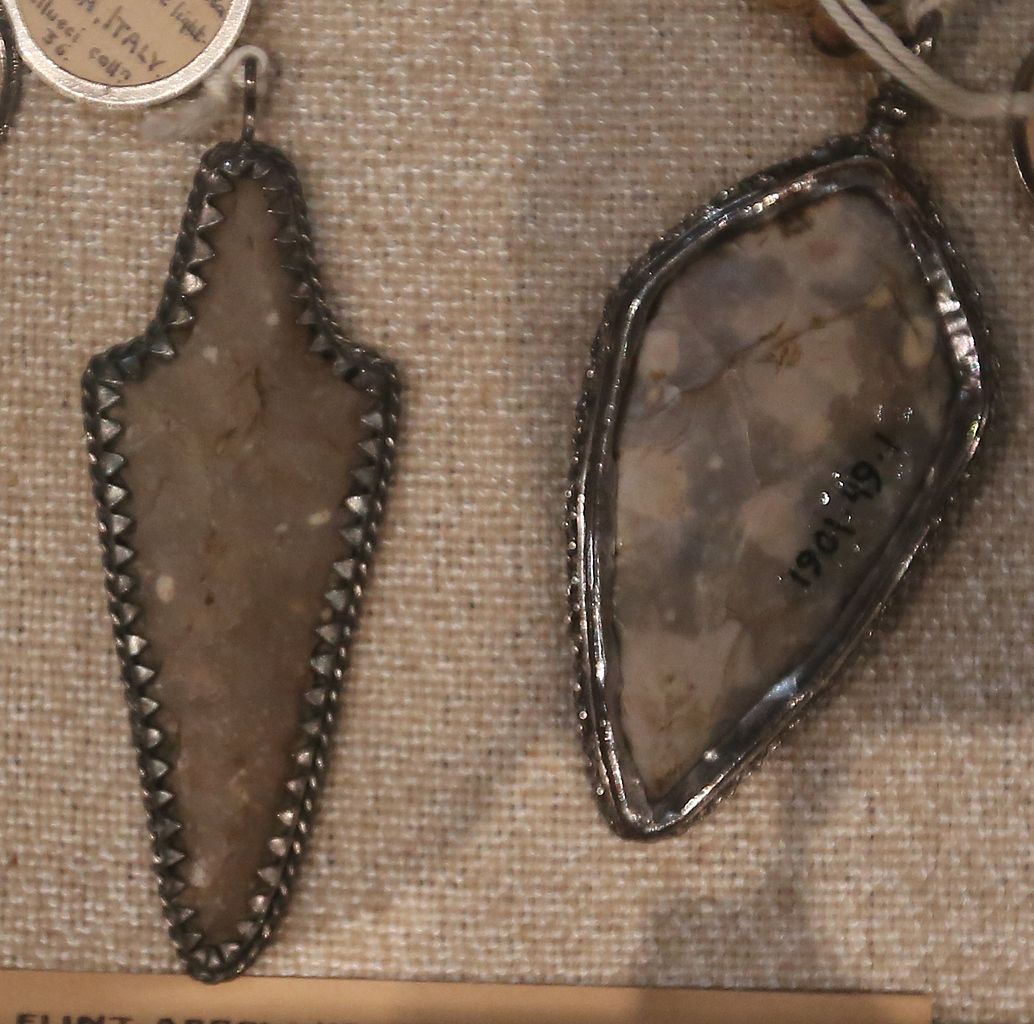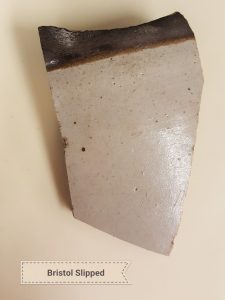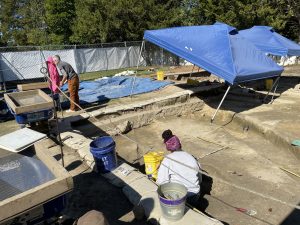8 Chapter 8: Introduction to Archaeology
Introduction to Archaeology
Nancy Phaup
By the end of this chapter, you will be able to:
- Identify and describe archaeology and archaeological fieldwork
- Describe the types of data archaeologists use
- Explain the significance of context to archaeological interpretation
- Characterize the different types of sites studied by archaeologists
From museums, science magazines, television shows, and even films, most of us have had some exposure to archaeology and have become familiar with some of the world’s most famous archaeological discoveries. You have likely heard about the only surviving “Wonder of the Ancient World”, The Great Pyramid of Giza. Perhaps you have a “bucket list” of famous archaeological sites you would like to visit like Stonehenge in Great Britain or the ancient Mesoamerican city of Teotihuacán. However, have you ever met an archaeologist in person? We commonly deal with many professions we see in the media, such as doctors, lawyers, police officers, firefighters, and teachers, but rarely have personal contact with archaeologists. As a result, we mostly rely on stereotypes portrayed in the media to understand archaeologists and the work they do. First surprise? Archaeology is much more than digging! As we have seen, it is a sub-discipline of the larger field of anthropology. While the interest of anthropology is to better understand humans and their wondrous cultural variety, in all times, at all places, archaeology specifically focuses on human cultures in the past. It asks similar questions but uses different kinds of data. Rather than relying on observations of living participants, archaeology focuses on material culture—items people made, modified, and used in the past to understand the cultures of our ancestors.

Archaeologists are interested in both large- and small-scale questions. Small-scale questions are straightforward, such as: What was in this pot? Where did this stone come from? What did this person eat before he died? Large-scale questions that interest archaeologists include things like: Why did the domestication of animals and plants emerge? Why did some areas develop cities while others did not? Why do civilizations collapse and disappear? Archaeology considers these types of questions and everything in between. Often there are different levels of confidence when investigating the past. We can generally be more confident about things like diet, trade, tool use, and construction techniques than we are about the large-scale “why questions” of the past. Additionally, understanding the values and symbols systems of past societies is quite challenging, and yet is one of the most interesting aspects of archaeology and targets what we usually think of as human culture—that complex web of shared meaning that underpins how we see the world.
Every discipline has a foundation and methods with which they seek to build knowledge. Knowing is especially challenging in archaeology because of the time elapsed since the events occurred. What constitutes a good method, good evidence, and reasonable inferences? These are questions that are debated in every discipline, not just archaeology. Hypotheses, which are informed guesses about what happened and why, are commonly tested in archaeology but there are different methods to test those hypotheses. Some archaeologists collect quantitative data. Quantitative data is information that is measurable. An archaeologist, for instance, might measure the length or projectile points, or count the number of pollen grains in a soil sample, or record the quantity of animal bone on a site. Other archaeologists are more interested in qualitative data, that is, descriptive information. Archaeologists interested in art and the use of symbols might be more interested in describing the nature of the artwork and its context. Of course, this is a simplified dichotomy, and archaeological studies routinely consider both quantitative and qualitative data simultaneously. Indeed, archaeologists regularly use many different types of data and lines of evidence to investigate a question, including the scientific method and focused fieldwork.
The scientific method is a process by which scientists ask questions, collect data, test hypotheses, and gain knowledge about the natural world. Its steps have been described in various ways but consistently address the same basic elements: observation, hypotheses, experimentation/data collection, analysis, and conclusions. When applied, these steps are more like a cycle than a straight linear process, as hypotheses can be revised after some initial data collection or experimentation, and new ideas and technologies can change the assumptions on which hypotheses were initially based. As we learn more and draw new conclusions, we develop new and different questions.
Fieldwork is the hallmark of anthropological study and the process by which anthropologists collect data. While the cultural anthropologist conducts fieldwork with groups of humans, the archaeologist tends to focus on archaeological sites. Some material collected can be analyzed in the field, while other types are analyzed in laboratories, sometimes years later. Typically, fieldwork in anthropology involves many hours of work. In archaeology, this might entail observing landscapes to identify locations of past human activity to excavate and study in archaeology.
The Archaeological Record
Archaeology’s overarching goal is to preserve the archaeological record. What is the archaeological record? We have seen that archaeologists tend to focus on material culture, they primarily study artifacts, objects made, used, or modified by humans. However, archaeologists are interested in anything that is evidence of past human activity. This evidence can be a farmer’s dwelling, a campsite, a cache of stone tools, a burial site, a scatter of flint flakes, or an ancient city. Just as anthropology itself studies “all things human”, archaeology studies all things related to past human activity. Combined, the material remains of past human activity, such as the locations, artifacts, food remains, and refuse is the archaeological record.

Context is Everything
Despite what is shown in movies and on TV, most archaeological finds are not golden treasures or priceless pieces of antiquity. Most are items that were used on a regular basis and then discarded due to wear, damage, or loss. What are the types of materials that archaeologists most frequently uncover and what are the settings in which these materials are most often found?
We tend to think of archaeologists as primarily studying objects made by humans, artifacts, but there is much more to archaeological investigations! Archaeologists are most concerned with archaeological context—how an artifact or other type of archaeological data was found in relation to everything else at the archaeological site. A site is a distinct clustering of artifacts in a location that demonstrates human activity took place there. An artifact’s context includes its provenience, exactly where the object was found (horizontally and vertically) in the site; its association in terms of its relationship and positioning with other objects; and the matrix of natural materials such as sediments surrounding and enclosing the object in place.
When a site is looted or excavated by amateurs, the context of the artifact is lost even if the artifact remaubs. But looting is not the only way to remove an artifact from its original context! Careful excavation, with precise attention to detail and note taking using a scientific method is required in archaeology so that context and provenience are maintained! This is because excavation also strips the site of much of its most important information, the components that tell a fuller story of the artifacts and the site. If careful excavations are not done and their records preserved, this would leave behind a collection of artifacts with no story left to tell. Ideally, items found during an excavation are left in situ, which is Latin for “still,” meaning they are in their original place of deposition. This is why archaeologists tell you to leave any item you find, especially on public land, untouched no matter how tempting it is to pick it up, look at it, and put it in your pocket to show your archaeology professor!
Elves and Fairies
For the field of modern archaeology to arise, at least two basic realities had to be recognized. The first seems obvious now; Artifacts had to be recognized as objects made by people. In Europe, it was not uncommon for people to ascribe artifacts to the work of mythical beings like Thor or even elves. In Scotland, arrowheads were called “elf-arrows,” and could be worn to protect against “elf-shot.” Gradually, people began pointing out that these mystical curiosities of Europe were not much different from the everyday tools used by people encountered during the colonization of Africa, Australia, and the Americas by European powers. In 1699, Edward Lhuyd, Keeper of Ashmolean Museum in Oxford concluded that mysterious objects found in Scotland were not the work of elves, but just plain old arrowheads.
I doubt not but you have often seen of those Arrow-heads they ascribe to elves or fairies, they are just the same as the chip’d flints the natives of New England head their arrows with at this day: and there are also several stone hachets (sic) found in this kingdom, not unlike those of the Americans.
The second realization that paved the way for modern archaeology was the recognition of the long period of time that humans have occupied the Earth. Many scholars attempted to calculate the age of the Earth and/or people on the Earth using the available texts. Today, thanks to thousands of subsequent archaeological and geological investigations, the deep age of the earth and human existence presence is overwhelmingly clear. Humans have been in Europe for at least 40,000 years and other related species like Neanderthals were there for hundreds of thousands of years. The time depth of Homo sapiens is even greater in other parts of the world, as we have seen.

Artifacts and Ecofacts
Artifacts are objects that were used, modified, or made by people. They are also defined as portable and could have been carried by humans from place to place. Common examples of archaeological artifacts are projectile points (arrowheads), ceramic pots, baskets, nails, and glass bottles. Of course, there is a natural preference for complete artifacts since many objects at sites were discarded and were broken before being found, entering the archaeological record because they were thrown in the trash. As a discipline, however, archaeology must analyze all types of artifacts to get the most complete picture of human occupation and behavior. It is also easy to miss single-use artifacts such as a rock used to pound a tent stake in place because no one packed a hammer or mallet. Archaeologists spend much of their time thinking about and analyzing artifacts because the items were made or used by humans and correlate directly to human behavior. Thus, many aspects of artifacts can be analyzed, such as the material from which they were made, their artistic or functional style, and their design (see Figure 4). Archaeologists will also create a typology, which is a way to sort and classify things by type using specific attributes. This provides a way to understand how an artifact such as a pot changed over time in shape, form, and use. Typologies also provide useful estimates of the period in which the artifacts were made. .

Besides artifacts, archaeological sites provide ecofacts: organic and environmental remains such as animal bones, plant remains, and soils that occur at archaeological sites and relate to human activity but were not made, modified, or used by humans. Ecofacts can reveal much about human behavior. For example, plant and animal remains can allow archaeologists to reconstruct the environment when humans lived there, effectively telling researchers what types of plants or animals would have been available for humans to use or eat. Another type of object found at sites is a manuport, which is an object brought to the site by humans but not modified by them. For example, an unusual stone material known for its excellent heating properties could be found in a hearth or fire pit. A feature is an artifact such as a hearth, storage pit, midden (trash pile), house, or other structure that is not portable. Together, all of these pieces of evidence observed at and collected from an archeological site make up an assemblage.
Sites and Their Function
Creating an archaeological site is quite simple, it happens when we do an activity and leave behind traces of some kind. An archaeological site is a reflection of human behavior and they can come in many varieties! The type of site created will naturally be influenced by the people and time period in which it was generated. This means that an archaeologist excavating a Native American site from 8,000 years ago will find different sort of materials than someone excavating a contact-period site like Powhatan’s Werowocomoco. But all archaeological sites do tend to have certain similarities, they reflect patterned human behavior and for this reason archaeologists pay attention to the potential functions of a site—how the site was used by humans. Naturally, an important function of many sites is habitation; artifacts are concentrated where people lived for more than a few days or weeks. Sites of short-term habitation such as encampments typically offer few archaeological remains simply because of the short time humans were there. Sites where food was acquired and, in particular, processed are important parts of the archaeological record too. They include processing sites where humans prepared plants or animals for consumption, such as animal kill sites and butchering sites; storage sites where items such as grains were kept for long periods of time; hunting blinds and traps humans used to catch and kill animals; and agricultural sites where humans cultivated crops for food and other uses. Site type provides important information for archaeologists. It indicates the likely function of the site and allows archaeologists to predict the types of artifacts and ecofacts likely to be uncovered. An open-air site (that has no protection from the elements), for example, will rarely contain well-preserved perishable artifacts or features because of damage from wind, rain, heat, and cold. Natural shelter sites, like caves or rock overhangs, which do provide protection from the elements, on other hand, are excellent places to find preserved perishable items such as wooden artifacts and basketry.
Archaeologists are interested in many other types of sites as well, including quarries (where humans often harvested stones for tools and building) and lithic scatters (where they made and repaired stone tools, which are called lithics). Other sites provide information about human cultures and uses of symbolism, such as rock art sites at which humans painted pictographs, carved or etched petroglyphs, and scraped rocks and the soil to make geoglyphs. Cemeteries also yield important information about a people, even without exhuming the bodies. Finally, more recent excavations have also focused sites of habitation (or domestic sites) and burial sites (like cemeteries) but they are also interested in: military sites (places were armed conflicts occurred or that had a military occupation), churches , hospitals and other special purpose sites and industrial sites as well as commercial sites (Orser 2016).

As previously mentioned, context at a site is critical to understanding the archaeological data fully. Archaeologists need to understand the types of artifacts and sites they encounter, how such remains enter the archaeological record, and what can happen to them after they are deposited by humans. The study of what happens to archaeological remains after burial or deposition is called taphonomy. Taphonomy is important because it is likely that buried and deposited objects are not in situ when uncovered by archaeologists. Determining who or what could have caused the item to move from its original depositional location to the current location is important to understanding the complex contextual information presented at the site. For example, a plow in a field could churn the soil, disturbing an unknown archaeological site and redistributing the artifacts. This type of action, caused deliberately or accidentally by human activities, is called a cultural formation processes. Natural events, such as a wind storms, floods, volcanic eruptions, and even the effects of plant roots and animal burrowing, are called natural formation processes. When archaeologists understand what forces and events could have had an impact on the position of archaeological remains, they are better equipped to answer questions about whether marks on a bone came from animal gnawing or are signs of early human tool use and whether a collection of artifacts was deposited haphazardly or was affected by a mudslide.
Terms You Should Know
Study Questions
- Explain why you shouldn’t pick up an artifact you come across in nature.
- What are the differences between an artifact, an ecofact, and a feature?
- Give an example of a natural formation process and a cultural formation process.
- How are cultural anthropology and archaeology similar? How are they different?
- How do archaeologists collect data?
- Apply what you have learned about anthropologists to answer the following question. How can anthropologists use or be informed by the scientific method since most anthropologists do not generally conduct “traditional” experiments?
References
Orser, Charles R. Jr. 2016. Historical Archaeology. London: Routledge.
A derivative work from
Paskey, Amanda Wolcott and Cisneros, AnnMarie Beasley. 2020. Digging into Archaeology: A Brief OER Introduction to Archaeology with Activities. ASCCC Open Educational Resources Initiative (OERI).
Ruth, Susan. 2024. Archaeology. LibreTexts
Scheib, Crystal. 2023. Archaeology: It’s More Than Digging in the Dirt. LibreTexts
Anthropology is the study of what makes us human.
the field of anthropology that relies on the excavation of artifacts and fossils to explore how environmental and historical conditions have produced a diversity of human cultures.
Objects produced or modified by humans such as tools, art, buildings, clothing, etc.
an idea that proposes a tentative explanation about a phenomenon or a narrow set of phenomena observed in the natural world.
any information that can be quantified, counted or measured, and given a numerical value.
information that is descriptive in nature, expressed in terms of language rather than numerical values.
A process by which scientists ask questions, collect data, test hypotheses, and gain knowledge about the natural world.
an anthropological research method that that takes place away from the laboratory, office, or classroom.
Portable objects made, used, or modified by humans.
The material remains of past human activity, which includes sites, artifacts, food remains, and refuse, which form the database with which to study the human past.
The position of an archaeological find in relation to other finds on the site, including its associations, provenience, and matrix as well as what has happened to it since it was buried or placed on the ground.
A spatial cluster of archaeological evidence of human activity such as objects, features, and ecofacts.
The location, horizontally and vertically, that the archaeological find was positioned on the site. Sometimes referred to as provenance.
The relationship and position of an archaeological find to other artifacts and features that are in the same archaeological level at the site.
The natural materials such as sediments surrounding and enclosing the object in place.
When an archaeological find is left in the original place that it was found.
Classification of objects according to their physical characteristics such as shape, form, and use.
An object not modified by humans but brought to the site by past human activity, including both organic and inorganic materials.
An object brought to the site by humans but not modified by them.
A non-portable human-made material remains such as a fire pit, hearth, storage pit, house, or structure that cannot be moved from the site.
All the artifacts and data collected from an archaeological site.
A general term for any area that has evidence of a domestic activity, such as food preparation.
An archaeological site where humans prepared plants or animals for consumption.
Place where one or more animals were killed by hunters.
An archaeological site where animals were butchered and processed.
An archaeological site where food is stored for extended periods of time.
A construction that camouflages the hunter and allows the animal to come into view.
An archaeological site devoted to agriculture, the systematic and controlled use of other forms of life.
An archaeological site that is open to the elements.
A natural cavity enclosed by one or more rock walls and an overhang that provides protection from the elements.
stone artifacts that have been purposefully modified, or worked, by human hands.
human-made markings placed on natural surfaces.
a pictorial symbol for a word or phrase.
an image created by removing part of a rock surface by incising, picking, carving, or abrading, as a form of rock art.
A large-scale drawing or image made on the ground by arranging lines of stones, scratching the earth, etc., and often only fully visible from a distance or the air.
Archaeological sites with the remains of human habitation
Archaeological sites where people were buried, such as cemeteries.
Archaeological sites where armed conflict occurred or where there was a military occupation
Archaeological site where a specific type of human activity took place, such as churches, hospitals, or schools.
Archaeological sites with evidence of industrial activity by humans
Archaeological sites with evidence of human commercial activity, such as stores and markets.
The study of the fate of the remains of organisms after they die, especially the study of fossilization.
Human activities that move material culture from its original in situ depositional location to another context.
Natural events that move material culture from its original in situ depositional location to another context.

